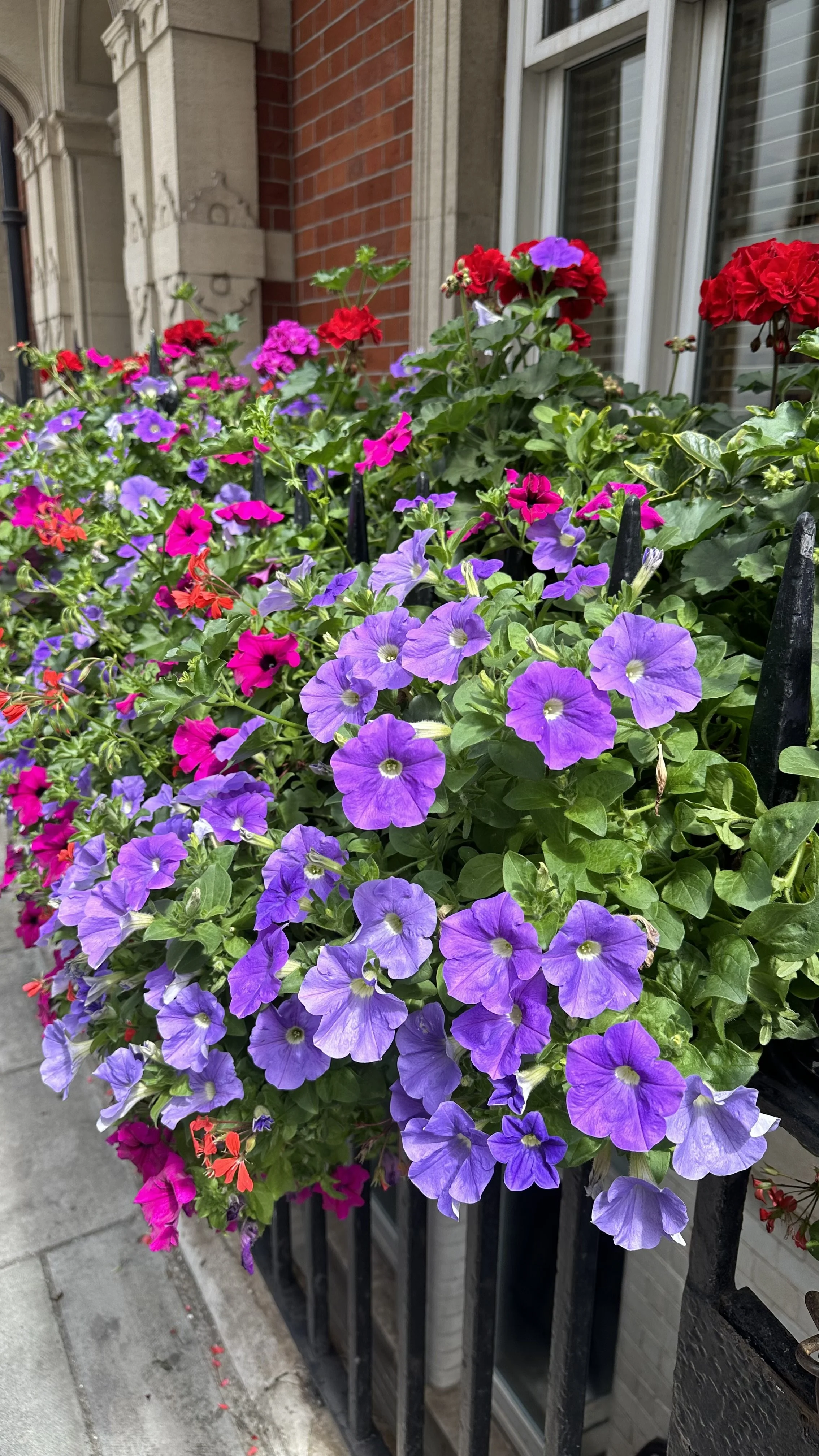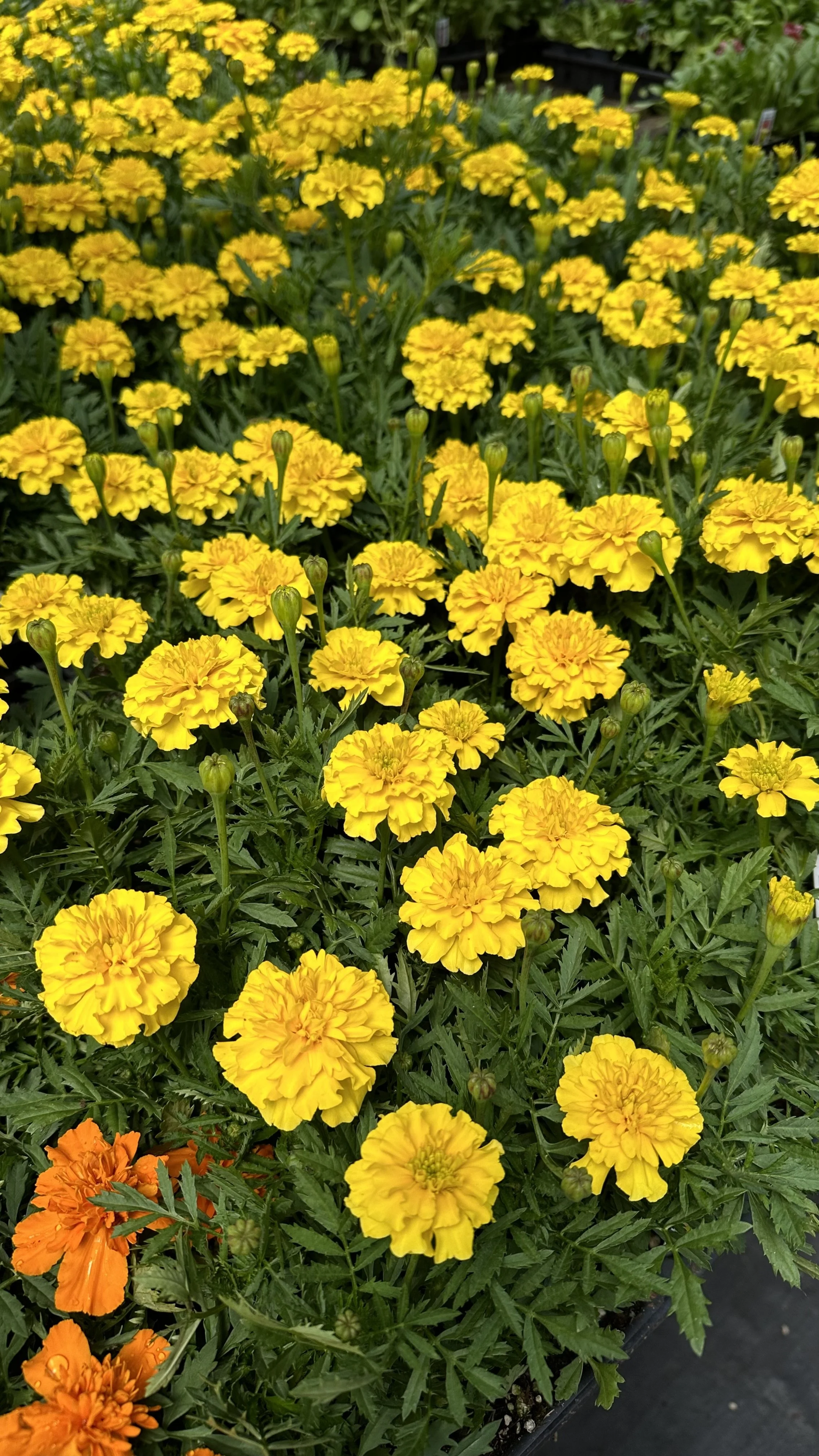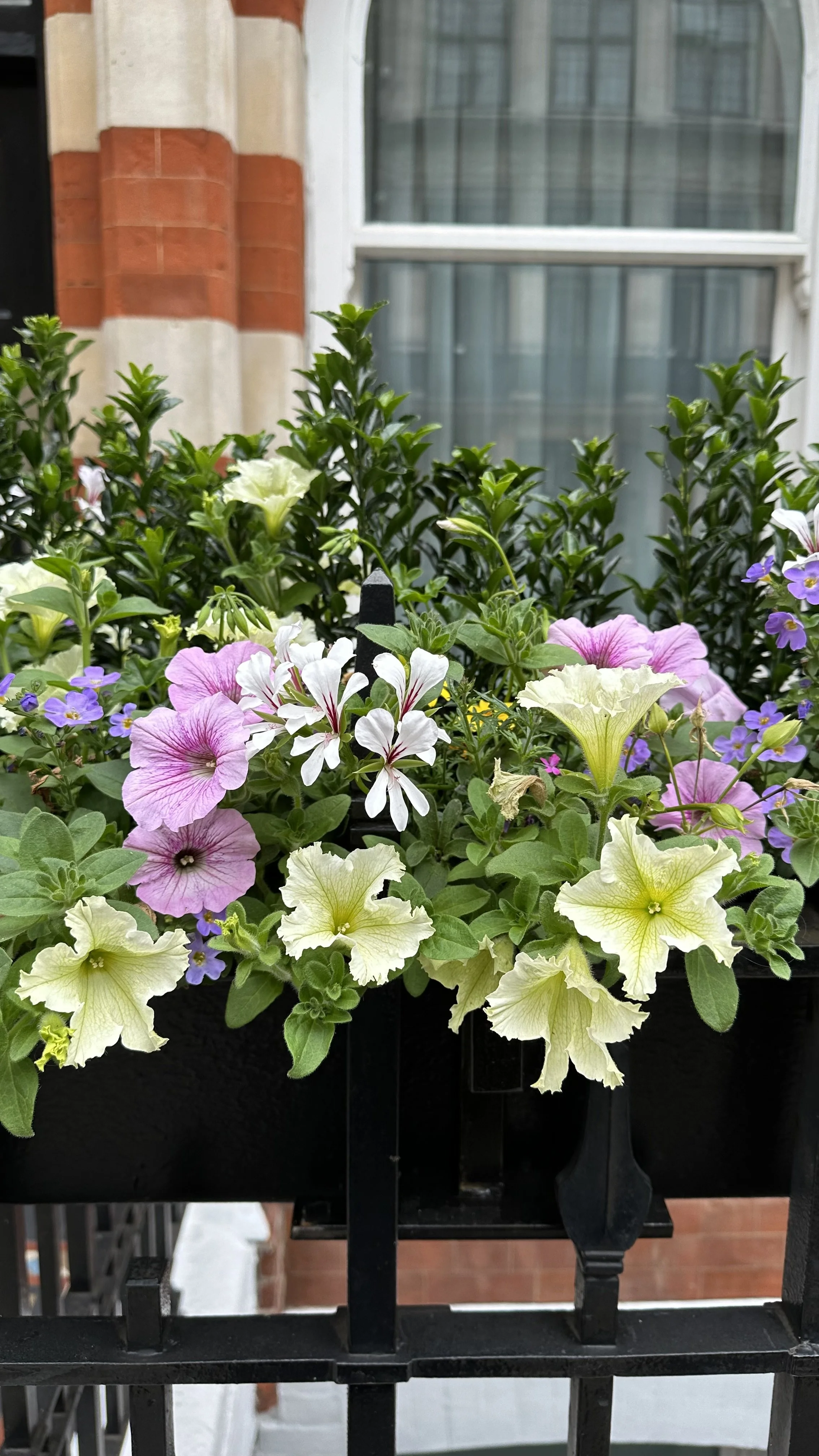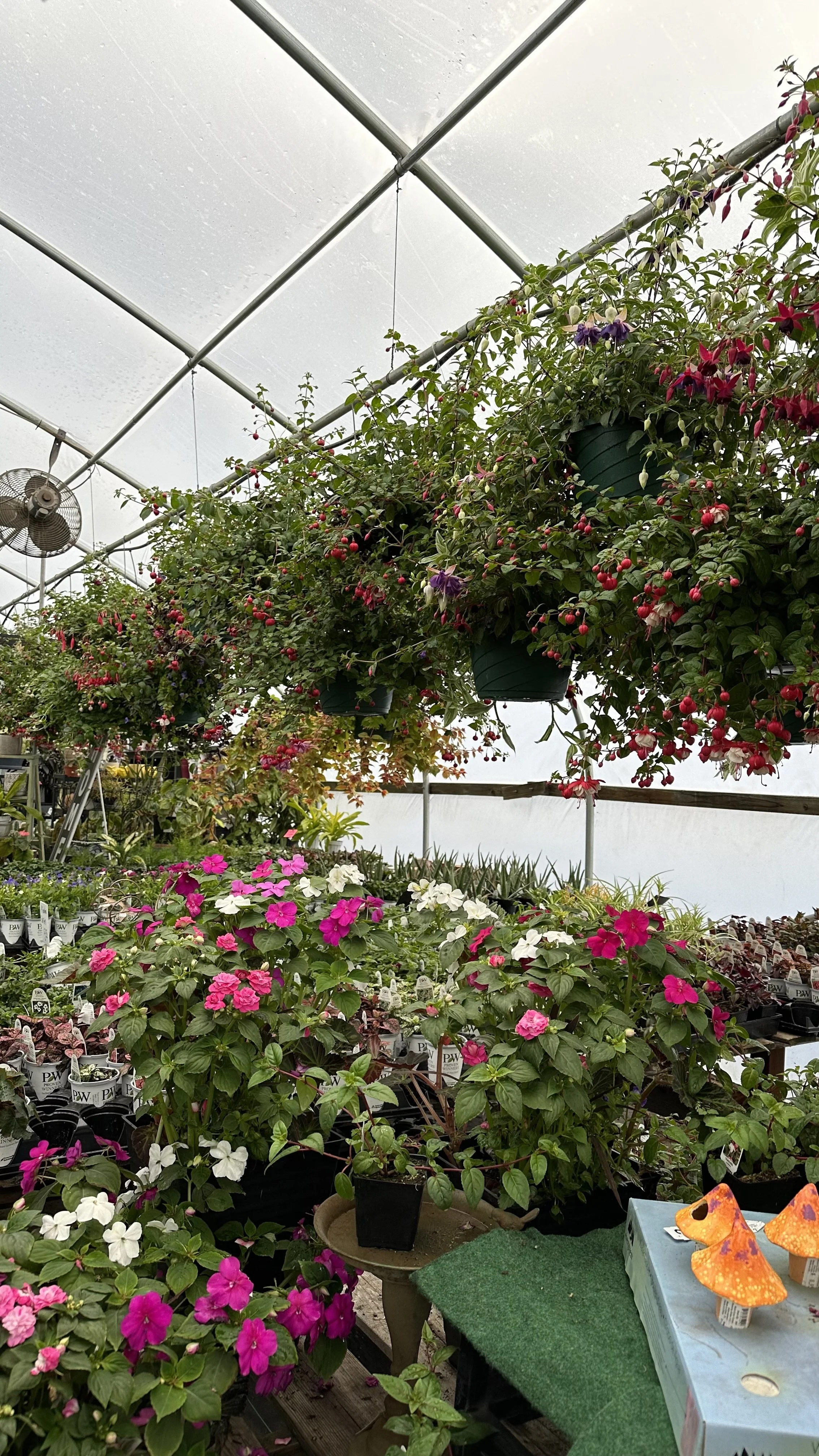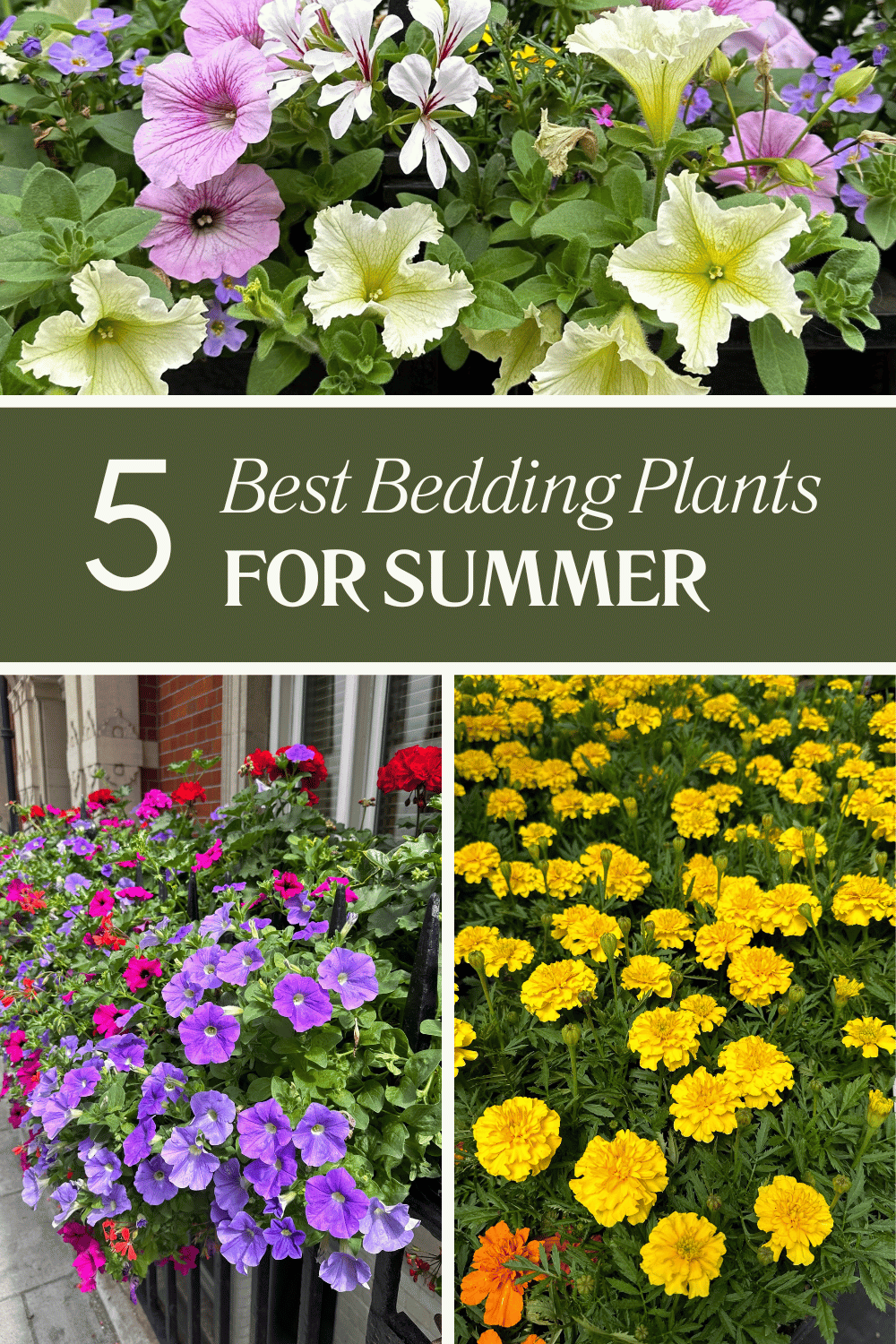The 5 Best Bedding Plants for Summer
This website is reader-supported - thank you! This post may contain affiliate links. As an Amazon Associate, I earn from qualifying purchases at no extra cost to you.
Summer is the season where gardens burst into life, showcasing a myriad of colors and scents.
As the sun shines brighter and days grow longer, it's the perfect time to focus on transforming your outdoor space with popular summer bedding plants.
These plants, known for their vibrant summer flowers, can bring instant color and vivacity to your garden.
While some plants have the ability to over-winter, most are annuals, adding to the charm and changing scenery of summer gardens.
This comprehensive guide aims to help you choose the best bedding plants for a stunning and fragrant summer garden filled with beautiful flowers.
For more inspiration, check out my guides:
My Top 5 Picks for Summer Bedding Plants
Choosing the right plants for your summer garden can be a delightful yet complex task.
To make your decision easier, here are my top picks for summer bedding plants.
We'll dive into their unique features, care requirements, and ideal locations for planting, so you can make the most informed choices for your garden oasis.
1. Petunias
Where to Plant:
Excellent for hanging baskets, containers, and garden beds that receive full sun.
Special Feature:
Drought and heat tolerant, with a variety of colors ranging from white and pink to deep purples and blues.
Care Tips:
Keep soil moist but well-drained. Deadheading is beneficial but not necessary for newer varieties, which are often self-cleaning.
To learn more about growing petunias, check out my guide How to Fertilize Petunias So They Bloom Like Never Before.
Why Choose Petunias:
They are a go-to for fuss-free summer flowering, offering vibrant blooms with minimal care.
Here are the petunia seeds I recommend growing:
For more growing tips, check out my guide: Easy Flowers to Grow from Seed.
2. Sweet Pea
Where to Plant:
Ideal for trellises, garden beds, and window boxes.
Try this garden obelisk for climbing sweet peas.
Special Feature:
Known for their intoxicating fragrance and pastel-colored flowers.
Care Tips:
Regular watering and well-drained, compost-rich soil will help these climbers thrive.
Deadhead regularly for continuous blooming.
Learn more about growing sweet peas with my guides:
Creative Support Ideas for Thriving Sweet Peas
Why Choose Sweet Pea:
Their fragrance alone is enough to captivate, making them a popular choice for cut flower arrangements as well.
Here are my favorite sweet pea seeds to grow:
3. Marigolds
Where to Plant:
Marigolds are best suited for garden beds, borders, and containers in full sun.
Special Feature:
Besides their brilliant orange and yellow blooms, marigolds act as natural pest deterrents.
Care Tips:
These hardy plants are not picky about soil and are relatively drought-tolerant.
Why Choose Marigolds:
Ideal for beginners and those looking for low-maintenance, yet striking, garden additions.
Here are my favorite Marigold seeds to grow:
4. Busy Lizzies (Impatiens)
Where to Plant:
Excellent for shaded spots, hanging baskets, and window boxes.
I love this modern black hanging basket.
Special Feature:
Prolific blooms in shades of pink, white, and purple.
Care Tips:
Moist, well-drained soil works best. Avoid direct midday sun to prevent wilting.
Why Choose Busy Lizzies:
They offer the perfect solution for adding color to shaded areas of your garden.
Here are my favorite Impatiens to grow:
For more bedding ideas, check out my guide:
5. Begonias
Where to Plant:
Thrive in containers, hanging baskets, and partial shade garden spots.
Special Feature:
Their foliage is almost as attractive as their flowers, offering a dual aesthetic benefit.
Care Tips:
Water when the soil surface becomes dry and provide a balanced fertilizer every 4-6 weeks.
Why Choose Begonias:
With an array of flower forms and colors, they provide diverse options for different garden styles.
Here are my favorite begonia seeds to grow:
Extra Tip: Plug Plants. For those who want to get a jump-start on their summer garden, consider purchasing plug plants.
These young plants can be transplanted directly into your garden or grown on before being relocated to their final position.
They offer a more affordable and time-saving approach to gardening.
Looking for more garden inspiration? Check out my guides:
What Are Bedding Plants?
Bedding plants are a specific category of plants primarily used for their aesthetic appeal to create visually pleasing outdoor spaces.
These are generally annual, biennial, or even perennial plants that are cultivated specifically to provide seasonal color and ornamentation in gardens, hanging baskets, and window boxes.
The term "bedding" refers to the practice of setting out uniform and organized beds of these plants to create a carpet of color or texture.
Annual vs. Biennial vs. Perennial Bedding Plants
Annuals:
These are plants that complete their lifecycle in one growing season, such as petunias and marigolds.
They are popular choices as summer bedding plants because of their vibrant blooms.
To learn more about annuals, check out my guide 20 Easy to Grow Drought Tolerant Annuals.
Biennials:
These plants require two growing seasons to complete their lifecycle. Examples include foxgloves and forget-me-nots.
Perennials:
While not commonly used as bedding plants, some perennials like certain varieties of geraniums can be used this way.
They return year after year but may not offer as consistent a bloom as annuals.
Features to Consider
When choosing bedding plants, there are several key features to consider:
Color:
Look for plants that will complement each other and create a harmonious color scheme.
Height and Spread:
Consider how tall and wide the plants will grow.
Shorter plants are generally placed at the front of beds, while taller plants go at the back.
Growing Conditions:
Take note of what each plant needs in terms of sunlight, water, and soil.
For example, some bedding plants thrive in full sun while others prefer partial shade.
Maintenance:
Some plants require more care than others. Busy lizzies, for example, are easy to care for and offer prolific blooms, making them an excellent choice for new gardeners.
Popular Uses
Bedding plants are versatile and can be used in a variety of ways, including:
Garden Beds:
For a flush of color that lasts all summer long.
Hanging Baskets:
Plants like petunias and sweet peas are perfect for hanging baskets, adding a splash of color at eye level.
Containers and Window Boxes:
Smaller varieties can be planted in containers or window boxes to decorate patios, balconies, and window sills.
Borders:
Low-growing varieties can be used to line walkways or define garden areas.
Why Choose Summer Bedding Plants?
Summer bedding plants offer a variety of advantages that make them the ideal choice for gardeners looking to add color, fragrance, and beauty to their outdoor spaces during the warmer months.
Below are some compelling reasons to opt for summer bedding plants:
Vibrant and Diverse Blooms
The primary appeal of summer bedding plants is their ability to produce vibrant, diverse blooms that can transform any space into a garden paradise.
From the bright oranges of marigolds to the delicate pinks of busy lizzies, there's a hue for every garden theme.
Extended Flowering Season
Many summer bedding plants have an extended flowering season, often lasting from late spring through to the first frost.
This makes them an excellent investment for those who want to enjoy a colorful garden for an extended period.
Heat and Drought Tolerance
Summer can be tough on plants, but many summer bedding varieties are bred to be tolerant of high temperatures and even drought conditions.
For instance, petunias and marigolds are relatively hardy and can withstand periods of dryness and full sun exposure.
Low Maintenance
Summer bedding plants often require less fuss than other garden varieties.
Some, like busy lizzies, are particularly easy to care for, needing just a simple watering and feeding schedule and maybe some occasional deadheading to remove spent blooms.
Versatility
The versatility of summer bedding plants is truly remarkable.
They can be used in an array of settings—from hanging baskets to window boxes, and from garden beds to containers.
You can even find upright varieties that are perfect for creating a vertical interest in your garden.
Pollinator-Friendly
Many summer bedding plants, like sweet pea, are also beneficial for the ecosystem, attracting pollinators such as bees and butterflies to your garden.
This is not only a win for biodiversity but also adds an extra layer of life and movement to your outdoor space.
Cost-Effectiveness
Most summer bedding plants are relatively inexpensive, making them a cost-effective way to create a high-impact display.
You can also buy them as plug plants, which are younger, cheaper plants that you can grow on before planting out.
Tips for Planting and Care
Summer bedding plants can bring vibrant colors and fragrances to your garden, but their success depends on proper planting and care.
Here's a quick guide to help you ensure that your plants not only survive but thrive throughout the season.
Soil Preparation
The soil acts as the foundation for your plants. Well-drained, nutrient-rich soil will give your plants the best chance of flourishing.
How-To: Consider adding organic matter or compost to your soil to enhance its fertility.
Here is the soil I recommend using for bedding plants:
Watering Techniques
Consistent and adequate watering is vital, especially during dry spells.
How-To:
Use a soaker hose or drip irrigation system for even watering.
Water early in the morning or late in the afternoon to minimize evaporation.
Watering garden beds is a great way to use rainwater collected in a water butt.
For more watering tips, check out my guide How to Use Watering Globes.
Fertilizing
Proper fertilization provides essential nutrients that your plants may not get from the soil alone.
How-To:
Use a balanced, slow-release fertilizer. Always follow the manufacturer's instructions for application rates and timing.
Here is the fertilizer I recommend for garden beds:
Pest Control
Insects and other pests can quickly destroy your beautiful garden.
How-To:
Use natural predators like ladybugs or apply insecticidal soap.
Seasonal Care
Spring:
This is the time to start your plug plants indoors and prepare your soil.
Summer:
Focus on consistent watering and enjoy the blooms! Deadhead regularly to encourage more flowering.
Fall:
If your plants can over-winter, consider bringing them inside or providing some form of frost protection.
A Word on Containers and Hanging Baskets
Containers:
Ensure they have proper drainage holes and are large enough to accommodate your plants' root systems.
Hanging Baskets:
Choose lightweight, moisture-retaining compost and consider self-watering options to reduce maintenance.
By following these planting and care tips, you can optimize the health and beauty of your summer bedding plants, turning your garden into a colorful, fragrant paradise.
FAQs
When is the Best Time to Plant Summer Bedding Plants?
The ideal time to plant summer bedding plants is late spring to early summer when the risk of frost has passed.
Planting during this time allows the plants to establish themselves before the intense heat of mid-summer.
Are There Any Drought-Tolerant Bedding Plants?
Yes, some summer bedding plants are relatively drought-tolerant.
Petunias and marigolds are excellent examples. These plants can withstand periods of dryness, although it's still essential to provide adequate water for optimal growth.
Can Summer Bedding Plants Be Over-Wintered?
While most summer bedding plants are annuals and will die off with the first frost, some can be over-wintered indoors or in a greenhouse.
Geraniums and fuchsias are among the few that can be carried over to the next year if proper care is taken.
What Are Plug Plants?
Plug plants are young, small plants that are sold in trays and are ready to be transplanted into your garden or container.
They are a cost-effective way to get a variety of plants without the hassle of growing them from seed.
How Do I Choose Plants for Different Sunlight Conditions?
Pay close attention to the growing conditions specified for each plant. Some plants thrive in full sun, while others prefer partial shade.
For example, marigolds and petunias do well in full sun, whereas busy lizzies and begonias prefer partial shade.
What Type of Soil Do Bedding Plants Need?
The type of soil required can vary depending on the plant.
However, most bedding plants are relatively forgiving and will thrive in well-drained, moderately fertile soil. Some plants like marigolds can even tolerate poor soil conditions.
How Often Should I Water My Summer Bedding Plants?
The watering schedule can differ from plant to plant, but as a general rule, most summer bedding plants prefer a consistent watering schedule.
During hot and dry spells, more frequent watering may be necessary.
Can I Use Summer Bedding Plants in Hanging Baskets?
Absolutely! Many summer bedding plants like petunias, sweet peas, and busy lizzies are perfect for hanging baskets.
They offer trailing or upright varieties that can create eye-catching displays at various heights.
Are Summer Bedding Plants Pet-Friendly?
Not all plants are safe for pets. For example, begonias are toxic to dogs and cats.
If you have pets, make sure to do your research before choosing your plants or consult your local garden centre for advice.
Incorporating summer bedding plants into your garden is an exciting journey filled with countless possibilities.
From popular summer favorites like petunias and marigolds to the unique ability of some plants to over-winter, bedding plants offer an array of options to match every gardener's needs.
The beauty of summer flowers can transform your outdoor space into a haven of color, fragrance, and texture.
Looking for more garden inspiration? Check out my guides:
Pin this post to save it for later!
